In the realm of veterinary oncology, the integration of chemotherapy, surgery, and radiation therapy stands as a cornerstone in the comprehensive management of cancer in dogs. These modalities, when thoughtfully combined, offer a tailored approach to address various types of canine cancer.
However, the intricacies of each treatment method, potential side effects, and the importance of a well-rounded care plan remain vital considerations in navigating this challenging terrain. By exploring the nuances of these treatment options, a deeper understanding of the impact on canine patients and the path towards optimal outcomes emerges.
Key Takeaways
- Staging cancer guides prognosis and treatment plans.
- Common treatments: chemotherapy, surgery, radiation therapy.
- Goal: Minimize pain, improve quality of life.
- Chemotherapy aims to shrink tumors with manageable side effects.
Importance of Staging in Canine Cancer
Staging plays a vital role in the comprehensive assessment of canine cancer, guiding veterinary oncologists to determine prognosis and tailor an effective treatment strategy. By categorizing the extent of the disease, staging helps veterinarians understand the cancer's spread and its potential impact on the dog's health.
This process involves various diagnostic tests like imaging studies, blood work, and biopsies to accurately assess the cancer's stage. Understanding the stage of the cancer allows for personalized treatment plans that consider the specific needs of each dog. It also helps in predicting the disease's progression, response to treatment, and overall prognosis.
Through staging, veterinary oncologists can make informed decisions to provide the best possible care for dogs battling cancer.
Chemotherapy Goals and Side Effects
Chemotherapy in canine cancer treatment is designed to achieve specific therapeutic goals while managing potential side effects effectively. The main goals of chemotherapy in dogs include shrinking and stopping tumor growth, with manageable side effects and no typical hair loss. However, chemotherapy can have side effects such as gastrointestinal upset, bone marrow suppression, and potential damage to healthy cells. These side effects can vary depending on the type of chemotherapy drugs used and the individual dog's response to treatment. It's essential for veterinarians and pet owners to work together to balance the benefits of chemotherapy with its potential side effects to ensure the best possible outcome for the dog.
| Goals | Side Effects |
|---|---|
| Shrink tumor growth | Gastrointestinal upset |
| Stop tumor growth | Bone marrow suppression |
| Manageable side effects | Potential damage to healthy cells |
| No typical hair loss in dogs | Vary based on drug type and individual response |
Effectiveness of Surgery in Dogs
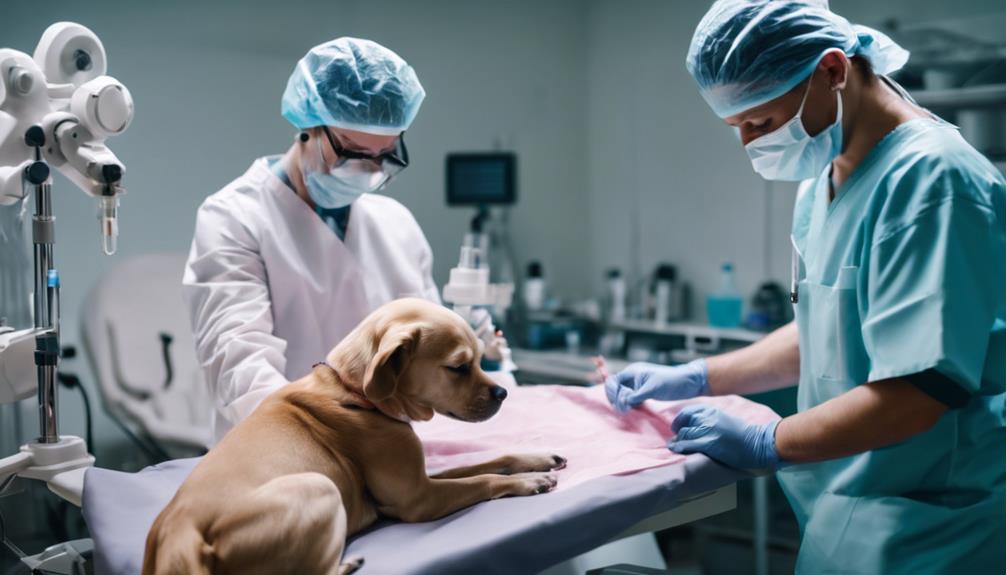
In the realm of canine cancer treatment, surgery stands as a pivotal intervention known for its effectiveness in addressing small, localized, and accessible cancers in dogs. Surgical procedures are particularly beneficial in cases where the tumor is confined to a specific area and can be completely removed without spreading to surrounding tissues.
By excising the cancerous growth, surgery aims to eliminate the primary source of the disease, potentially offering a cure for certain types of canine cancers. Additionally, surgery plays a crucial role in obtaining tissue samples for further analysis, aiding in accurate staging and treatment planning.
When combined with other treatment modalities like chemotherapy, surgery can significantly improve the overall efficacy of cancer management in dogs.
Role of Radiation Therapy in Treatment
The application of radiation therapy in canine cancer treatment is a vital component of comprehensive care plans. Radiation therapy is particularly useful for treating cancers that are not easily accessible via surgery. It works by targeting cancerous tissue directly, aiming to shrink tumors and halt their growth.
While effective, radiation therapy can have potential side effects that may manifest shortly after treatment or even months later. Veterinary oncologists often recommend radiation therapy in combination with other treatment modalities like surgery and chemotherapy for a more holistic approach to managing cancer in dogs.
Supportive Medications for Side Effects
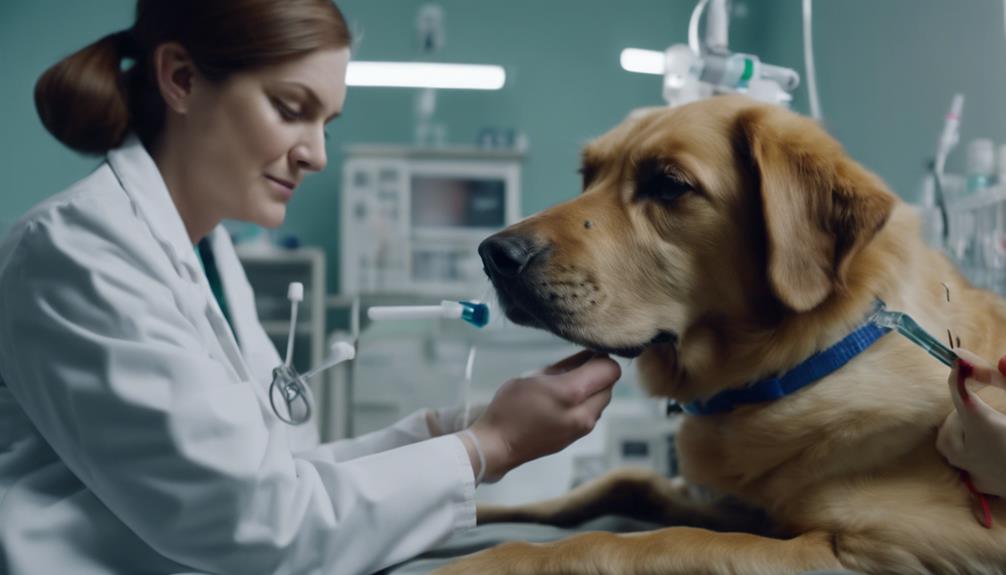
Supportive medications play a crucial role in managing the side effects of cancer treatment in dogs, ensuring their comfort and well-being throughout the therapeutic process. These medications help alleviate symptoms such as nausea, pain, and fatigue, improving the overall quality of life for dogs undergoing cancer treatment. Here is a table showcasing some common supportive medications used in managing side effects:
| Medication | Purpose | Common Side Effects |
|---|---|---|
| Anti-nausea | Reduce nausea and vomiting | Drowsiness, constipation |
| Pain relievers | Alleviate pain and discomfort | GI upset, sedation |
| Appetite stimulants | Boost appetite and maintain weight | Restlessness, increased thirst |
Holistic Approaches to Cancer Treatment
Supporting the overall well-being of dogs undergoing cancer treatment, holistic approaches offer complementary strategies that aim to enhance conventional therapies and improve the holistic health of the animal. Holistic approaches can include:
- Acupuncture to help manage pain and improve energy flow.
- Herbal therapy to support the immune system and reduce inflammation.
- Massage therapy to promote relaxation, reduce stress, and improve circulation.
- Dietary therapy to provide essential nutrients and support overall health.
Considerations for Cost and Budget
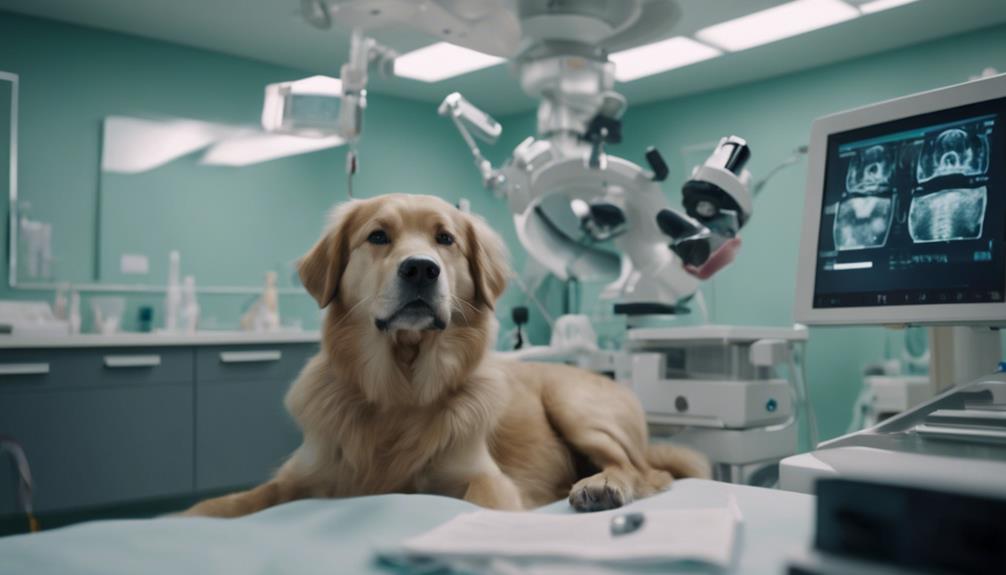
What financial factors should pet owners consider when planning cancer treatment for their dogs? When embarking on cancer treatment for your dog, it's essential to factor in the costs involved. Veterinary oncology treatments, including chemotherapy, surgery, and radiation therapy, can be significant investments. Considerations such as the type and stage of cancer, the chosen treatment options, potential follow-up care, and supportive medications all contribute to the overall cost. Additionally, unforeseen complications or the need for emergency care can further impact expenses. Being financially prepared and understanding the potential financial commitment required for your dog's cancer treatment is crucial for providing the best care possible.
| Financial Factors to Consider | Examples | Considerations |
|---|---|---|
| Type and Stage of Cancer | Melanoma, Lymphoma | Different cancers may require varying levels of treatment and monitoring. |
| Treatment Options | Chemotherapy, Surgery, Radiation Therapy | Each treatment option comes with its own costs and potential follow-up care requirements. |
| Supportive Medications | Pain Management, Anti-nausea Medications | Additional medications may be necessary to manage side effects and improve the dog's comfort. |
| Unexpected Costs | Emergency Care, Complications | Be prepared for unforeseen circumstances that may require additional financial resources. |
Monitoring Symptoms and Quality of Life
Regular monitoring of symptoms and quality of life is imperative during the course of cancer treatment in dogs to assess their progress and ensure optimal care. It is essential to observe any changes in your dog's condition and well-being to address any issues promptly.
Here are key points to consider:
- Keep a symptom diary to track changes over time.
- Maintain open communication with your veterinarian regarding any concerns.
- Monitor your dog's appetite, energy levels, and behavior regularly.
- Quality of life assessments can help guide treatment decisions and ensure your dog's comfort.
Realistic Expectations for Treatment
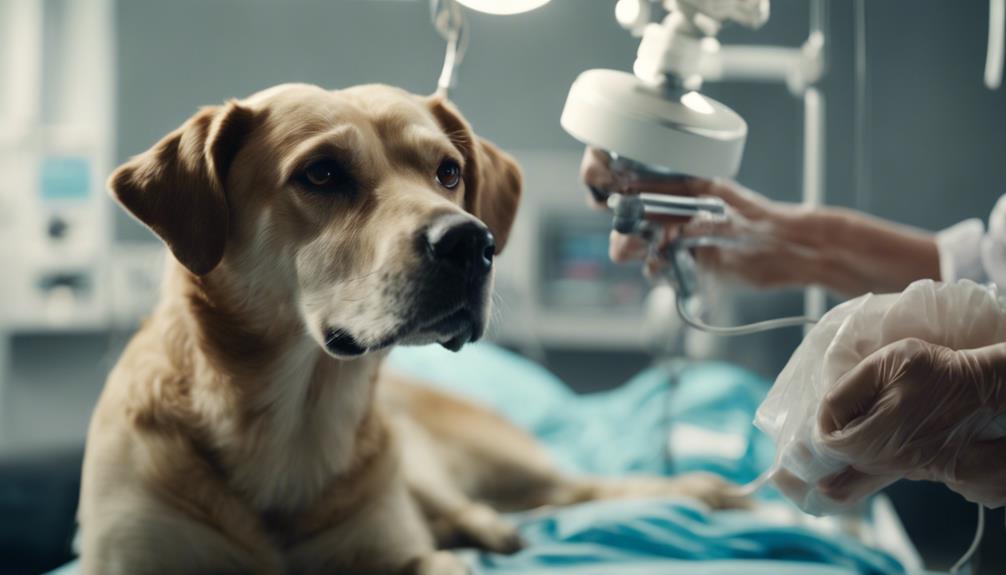
When embarking on cancer treatment for dogs, it is crucial for pet owners to have realistic expectations regarding the outcomes and challenges that may arise throughout the process. While advances have been made in veterinary oncology, it is important to understand that not all cases will have a positive outcome.
Some factors that can influence treatment success include the type and stage of cancer, the overall health of the dog, and how well they respond to the chosen treatment. Pet owners should be prepared for potential side effects, the possibility of treatment not being curative, and the emotional toll that caring for a pet with cancer can bring.
Setting realistic expectations can help in making informed decisions and providing the best possible care for the furry companion.
Preparation for Cancer Treatment Journey
As pet owners navigate the path of cancer treatment for their beloved dogs, adequate preparation plays a crucial role in ensuring a well-managed and supportive journey for both the pet and the caregiver.
- Consultation with Veterinary Oncologist: Schedule an appointment to discuss treatment options and expected outcomes.
- Financial Planning: Understand the costs involved and explore potential financial assistance or insurance coverage.
- Emotional Support: Seek counseling or support groups to cope with the emotional toll of the treatment process.
- Logistical Arrangements: Plan for transportation to veterinary appointments, medication schedules, and potential caregiving needs.
Health Issues: Heartworms in Dogs
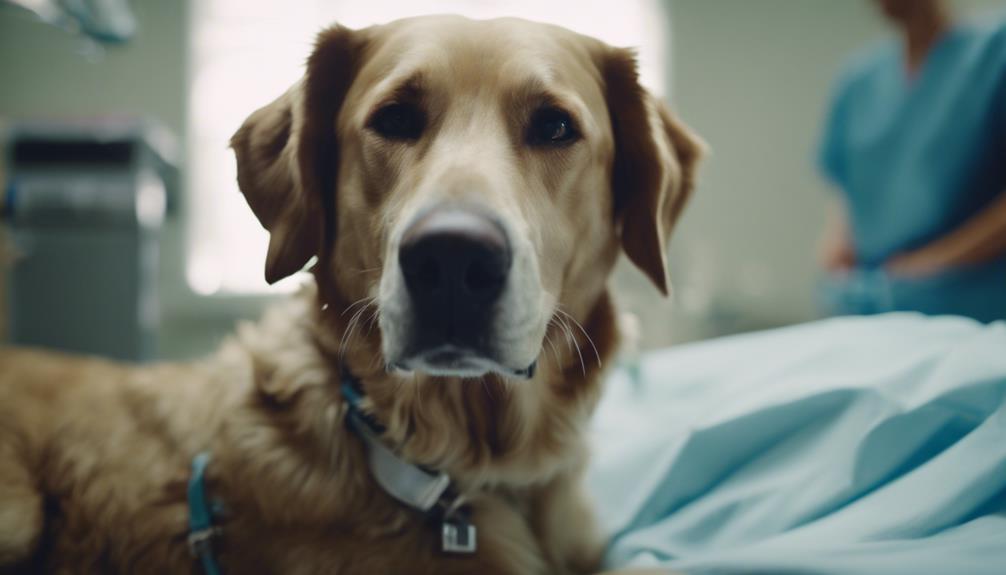
Heartworm disease in dogs poses a significant health risk, transmitted through mosquito bites and leading to symptoms such as coughing and fatigue. Prevention involves monthly medication, and treatment can be costly and challenging. Here is a table summarizing key points about heartworms in dogs:
| Aspect | Description | Importance |
|---|---|---|
| Transmission | Through mosquito bites | Critical |
| Symptoms | Coughing, fatigue | Early detection |
| Prevention | Monthly medication | Vital |
| Treatment | Costly and challenging | Immediate action |
| Complications | Heart and lung damage, potentially fatal | Serious consequences |
Health Issues: Lymphoma in Dogs
Lymphoma in dogs is a prevalent form of cancer that requires timely diagnosis and appropriate treatment for optimal management.
- Symptoms: Lethargy, swollen lymph nodes, weight loss, and decreased appetite.
- Diagnosis: Biopsies, blood tests, and imaging techniques like ultrasound and X-rays.
- Treatment Options: Chemotherapy, prednisone, radiation therapy, and immunotherapy.
- Prognosis: Varies based on the stage of the cancer, the type of lymphoma, and the overall health of the dog.
Early detection and a tailored treatment plan can significantly improve the quality of life and potentially extend the lifespan of dogs affected by lymphoma. Regular veterinary monitoring is crucial for managing this condition effectively.
Conclusion
In conclusion, the comprehensive approach to cancer treatment in dogs, including chemotherapy, surgery, and radiation therapy, aims to improve quality of life and manage pain.
Staging plays a crucial role in formulating treatment plans and determining prognosis.
Supportive medications, realistic expectations, and preparation are essential components of the treatment journey.
By considering these factors, we can provide optimal care and support to canine companions facing the challenges of cancer.




